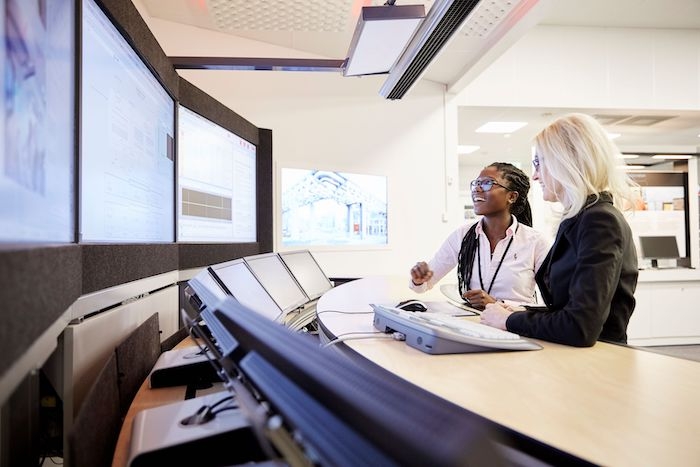
Features
Articles
Cloud-based energy management optimizes building performance
May 13, 2019 | By Jon Rodriguez
 Photo by ABB
Photo by ABBMay 13, 2019 – With the rise of cloud-based Internet of Things (IoT) applications, there are new opportunities for electrical contractors to help their clients optimize the implementation of energy management principles in their buildings.
Specifically, a wide range of IoT-enabled environmental sensors—the sizes and costs of which have been driven down in part by their ubiquitous integration in smartphones—are available today that can be deployed throughout a building, changing managers’ approach to capturing, aggregating and sharing data, for the purpose of optimizing energy use and reducing consumption. A broad digital ‘ecosystem’ of suppliers is key to delivering value.
Deployment flexibility is supported by the interoperability of these sensors and related components, connected devices and cloud-based software, which can ‘close the loop’ for master process control and automation. It is also important to choose secure systems and applications that will protect the client’s data.
Creating a base
The proliferation of sensors has been very significant for electrical systems. Voltage and current sensors, for examples, are being integrated into today’s low-voltage (LV) circuit breakers, along with ‘smart’ controls and native communication capabilities within each device. These products can be installed to create a smart, connected, foundational base for data acquisition.
The advantages of a cloud-based platform, meanwhile, can include a reduced capital expenditure (capex), on-demand resource allocation of resources and capacity, user access from anywhere at anytime and increased speed of data processing and analytics, thanks to the support of outside cloud services.
On the other hand, some clients will prefer an on-premises cloud, i.e. based in their own data centre. This setup, which can certainly be provided today, leverages many of the benefits of the cloud, while maintaining all data within the premises.
In either case, edge and device gateways/servers can provide cloud connectivity, augment data storage and performance, manage workloads and reduce latency (i.e. delays in the transfer of data).
Implementing a strategy
Plug-and-play electrical distribution control systems allow the existing infrastructure—including air circuit breakers (ACBs), moulded case circuit breakers (MCCBs), miniature circuit breakers (MCBs) and energy meters throughout a facility—to be quickly connected to the cloud. Then managers can monitor their electrical system, track performance and allocate future costs accordingly.
After analyzing relevant information, they can remotely implement a power management strategy, improve the use of their assets and achieve savings. With energy expenses on hand, based on consumption in specific areas of the building (e.g. heating, ventilation and air conditioning (HVAC) system, manufacturing plant floor or main lobby), they can customize plans in greater detail.
In the United Arab Emirates (U.A.E.), for example, an indoor agricultural grower integrated ABB’s Ability digital suite with Heliospectra’s HelioCore LED lighting system. In addition to tracking the lights’ electrical consumption, the data extraction and plotting system monitors water and gas flow, average temperatures and power consumption by the facility’s water treatment, irrigation, HVAC and carbon dioxide (CO2) delivery systems. The collected data is then overlaid and displayed in a cloud-based application with graphical user interfaces (GUIs) to provide insight that helps the grower optimize production.
Jon Rodriguez is business development manager for ABB Ability. This article is based on a session he presented in March at ABB Customer World. For more information, contact him via email at jon.rodriguez@us.abb.com.
This article originally appeared in the May 2019 issue of Electrical Business magazine.
Print this page